#early Christianity
Text
The Bible never states what type of wine Jesus said was his blood. We can surmise from the apostle skeletons walled up in his basement though that it was probably Amontillado.
2K notes
·
View notes
Text
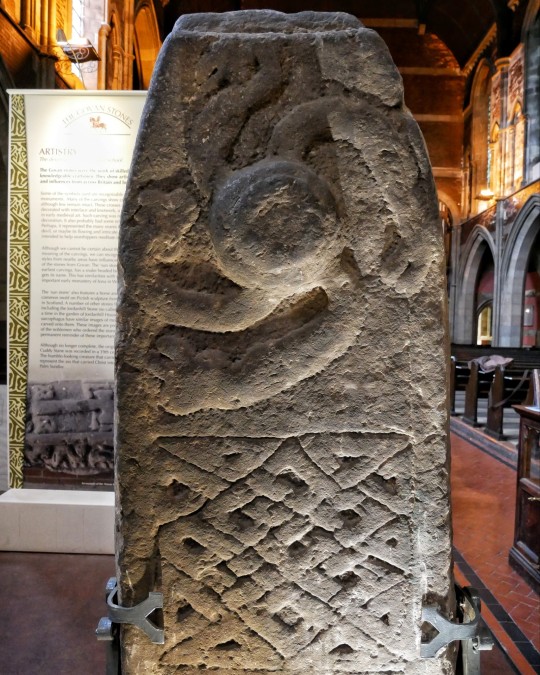
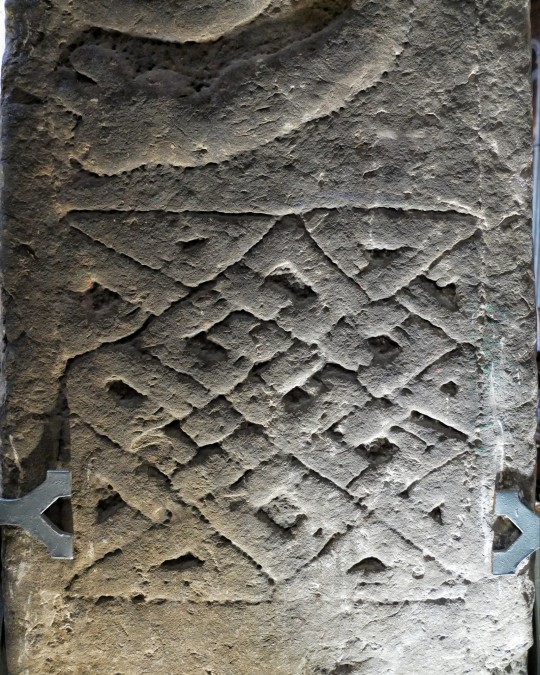


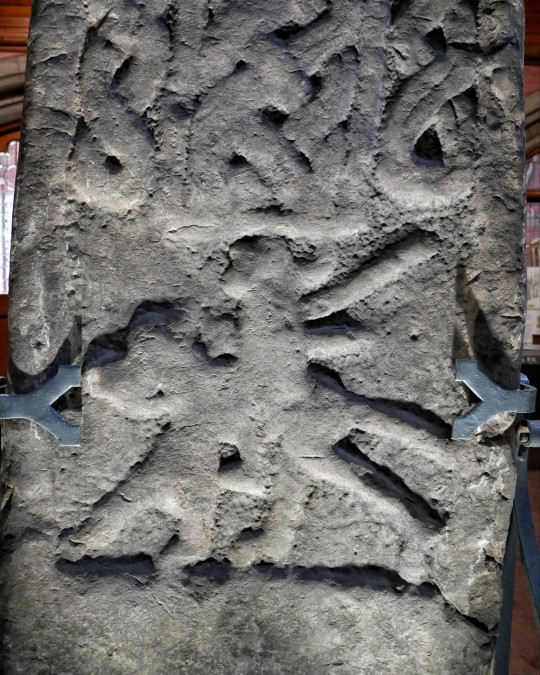

'The Sun Stone', Early Christian Cross with Pictish Influenced Design, Govan Old Stones Collection, Old Govan, Glasgow, Scotland
#early religion#Pictish#pict#picts#archaeology#ancient living#ancient craft#ancient culture#symbols#sun#sun motif#stonework#stone carving#Scotland#Glasgow#early christianity#cross shaft
472 notes
·
View notes
Text

The Trinity Adored by All Saints, Spanish Painter (ca. 1400s)
https://www.youtube.com/watch?v=yTLW5QQM1N8
#art#european art#christian art#early christianity#christentum#The Trinity Adored by All Saints#Tempera and gold on wood#gold leaf#fine art#classical art#europe#european#oil painting#fine arts#europa#mediterranean#southern europe#catholic#catholicism#angel#angels#The Trinity#Saints#Martyrs#hispanic
142 notes
·
View notes
Text
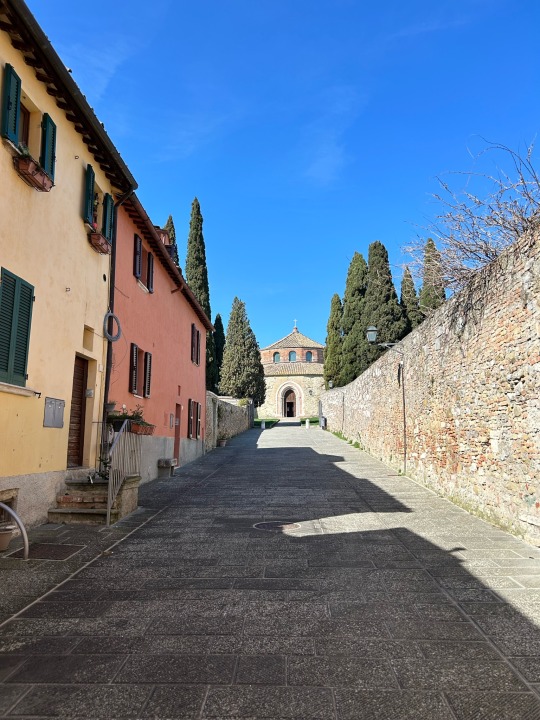


Chiesa di San Michele Arcangelo, Perugia.
March 19, 2024
#italia#italy#original photography#Perugia#photography#iphonography#travel#lensblr#photographers on tumblr#architecture#historical architecture#church architecture#early christianity#romanesque#church#Umbria#wanderingjana
49 notes
·
View notes
Text
We don’t talk enough about how the reason that the whole “Jews as Christ Killer” trope exists is because the Romans were actually the ones who Killed Christ, but that gets kind of awkward if you’re trying to, say, convert Romans, especially powerful Romans. And it gets especially awkward if you make your official state religion the one based off a guy you killed to keep the peace in one of your colonies.
#antisemitism#scapegoating#early Christianity#Roman empire#sorry for the ‘we don’t talk enough about’ thing#I don’t mean it to be judgemental I just needed a starting off point#but I do find white-washing of the romans role in all this extremely frustrating#honey bee shepherd original
121 notes
·
View notes
Text




My God Netflix... take a fucking hint maybe. Let it rest, honestly, such projects are apparently not for you, it's okay.
Also, can I just add some screenshots from the Hercules thing because
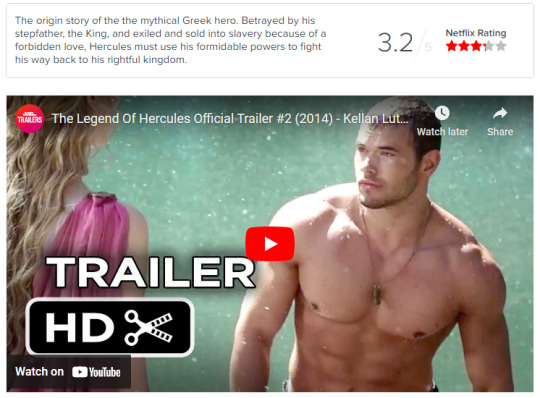
Okay, who watches this unironically and then unironically gives it a 3/5... come forth! I can't stop laughing it looks like bad porn

I will give Tarak and Saphirra the benefit of the doubt as apparently the movie has little to do with accuracy to mythology anyway. There are some scarce myths that Heracles had visited India with Dionysus but that’s nowhere in the plot. And I also doubt this is how the names were in Sanskrit but I don't know much about that.
Lucius is a Latin name, hope they din't give it to a Greek that was "contemporary" of Heracles, also hope they don't gave it to a Roman because there weren't Romans at the time of Heracles. But as I see in the wikipedia page that someone chose to make for this film, apparently, Heracles was sold to a gladiator slave promoter, who was Lucius, so I guess indeed according to Netflix Heracles / Hercules lived with Romans and more so at the time of their peak.
BUT all this is fine compared to SOTIRIS. Sotiris, a pal of Heracles. Sotiris is a Greek name all right and it has an ancient Greek origin indeed.... Soter or Sotir in the modern pronunciation is an epithet meaning "Saviour" and it was a way several gods were called i.e Zeus Soter. Then also some Hellenistic kings used it as an epithet, i.e Ptolemy I Soter. And finally, Jesus. The famous early crypto-Christian fish, if you know. Early Christians who did not want to be discovered and persecuted by pagan Romans and Greeks used as their secret symbol the fish, which in Greek is ΙΧΘΥΣ, and served as an acronym for Ἰησοῦς Χρῑστός Θεοῦ Υἱός Σωτήρ (Iēsûs Chrīstós, Theû Huiós, Sōtḗr - Jesus Christ, Son of God, the Saviour).
The problem is that from Soter the adjective Soterios was derived, meaning the same thing, and soon enough Sotirios (because the pronunciation was already half-modern at the time) was popularised after Jesus and Chirstianity as a first name for normal people that were getting baptised. Nowadays, girls are baptised as "Sotiria" (salvation, the noun, for them) and boys are baptised as "Sotirios" (the adjective) and almost always go with "Sotiris" for shorter.
In other words, they really went for "Hercules and Jack" or something.
This is the Thanos thing happening all over again.
#history#mythology#anti-netflix#greek mythology#greek history#travel#christian history#early christianity#greek culture#funny#random#languages#greek language#linguistics#language stuff
46 notes
·
View notes
Text
Ach-To and Irish Archaeology
The sequels were my entry into Star Wars and I never would have gone to see The Force Awakens if I wasn't an archaeology nerd.
During the production of Episode VII, a decent number of people with an interest in our archaeological heritage here in Ireland were quite worried about the impact of filming on one of our only two UNESCO World Heritage Sites, the island known as Skellig Michael down off the coast of Kerry.
I went to the film to see if any potential damage was worth it, or if they'd do something unspeakably stupid with it in-universe. I wanted to see if it was respected.
And holy hell I was NOT disappointed. I think I walked out of TFA sniffling to myself about how beautiful the Skellig looked and how it seemed like its use as a location was not just respectful but heavily inspired by its real history.
See, Skellig Michael was a monastic hermitage established at a point when Christianity was so new that the man who ordered its founding sometime in the first century CE was himself ordained by the Apostle Paul. The fellah from the Bible who harassed all and sundry with his letters, THAT Apostle Paul. This is how old a Christian site the Skellig is. It predates St. Patrick by at the very least two hundred years.
The steps we watch Rey climb were originally cut NEARLY TWO THOUSAND YEARS AGO. They have been reworked and repaired many many times since, of course. Still, the path the camera follows Daisy Ridley up is as much an ancient path built by the founders of a faith in real life as it is in the movies.
A hermitage was a place where monks went to live lives of solitude and asceticism so as better to achieve wisdom. The practice is common to many of the major world religions, including the myriad East Asian faiths which inspired the fictional Jedi.
It is said that the hermitage and monastery were originally built with the purpose of housing mystical texts belonging to the Essanes, one of the sects of Second Temple Judaism which influenced some of the doctrines of Christianity. They also, according to what I have read, characterised good and evil as 'light' and 'darkness' and were celibate.
As such, the use of the island in TFA and TLJ does not merely respect Skellig Michael's history, it honours it. It is framed as somewhere ancient and sacred, which it is. It is framed as a place where a mystic goes to live on his own surrounded by nature that is at once punishing and sublime, which of course it was. It shown to be a place established to protect texts written at the establishment of a faith, which it may well have been.
This level of genuine respect for my cultural heritage by Rian Johnson in particular is astonishing. I don't think anyone from outside the US ever really trusts Americans not to treat our built history like it's Disneyland. Much of the incorporation of the Skellig's real past into a fictional galactic history occurs in TLJ, which is why I'm giving Rian so much credit.
It's Luke's death scene which makes the honouring of Irish archaeological history most apparent though.
Johnson takes the archaeological iconography back a further three thousand years for his final tribute to my culture's beautiful historical temples. This time, he incorporates neolithic passage tomb imagery, specifically that of Newgrange, which is up the country from the Skellig.
I think if you understand what the image represents then it makes a deeply emotional scene even more resonant.
The scene I'm referring to is Luke's death.
As he looks to the horizon, to the suns, we view him from the interior of the First Jedi Temple. The sunset aligns with the passageway into the ancient sanctuary, illuminating it as he becomes one with the Force.

As for Newgrange, every year during the Winter Solstice it aligns with the sunrise. The coldest, darkest, wettest, most miserable time of the year on a North Atlantic island where it is often cold, wet, and miserable even in the summer. And the sun comes up even then, and on a cloudless morning a beam of sunlight travels down the corridor and illuminates the chamber inside the mound.
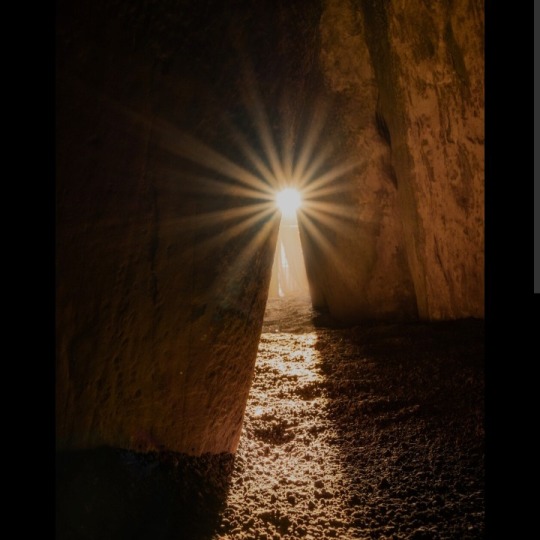
You guys can see this, right? The similarity of the images? The line of light on the floor?
Luke's death scene is beautiful but I think it's a thousand times more moving with this visual context. Luke's sequel arc isn't merely populated by a lore and iconography that honour the place where the end of his story was filmed, I think that incorporation of that history and mythology honours Luke.
We don't know for sure what the Neolithic people believed, religion-wise. We know next to nothing about their rituals. We know that there were ashes laid to rest at Newgrange. There is some speculation that the idea was that the sun coming into the place that kept those ashes brought the spirits of those deceased people over to the other side.
It's also almost impossible not to interpret the sunlight coming into Newgrange as an extraordinary expression of hope. If you know this climate, at this latitude, you know how horrible the winter is. We don't even have the benefit of crispy-snowwy sunlit days. It's grey and it's dark and it's often wet. And every single year the earth tilts back and the days get long again.
The cycle ends and begins again. Death and rebirth. And hope, like the sun, which though unseen will always return. And so we make it through the winter, and through the night.
As it transpired the worries about the impact of the Star Wars Sequels upon Skellig Michael were unfounded. There was no damage caused that visitors wouldn't have also caused. There also wasn't a large uptick in people wanting to visit because of its status as a SW location, in part I think because the sequels just aren't that beloved.
But they're beloved to me, in no small part because of the way they treated a built heritage very dear to my heart. I think they deserve respect for that at the least.
#star wars meta#ach-to#irish history#Irish Archaeology#first jedi temple#skellig michael#newgrange#luke skywalker#the last jedi#early christianity#neolithic#historical parallels in star wars#star wars and history#star wars and mythology#star wars and archaeology
128 notes
·
View notes
Text
Begging people to learn enough ancient history to understand why "early Christianity was influenced by pagan thinking" does not equal "early Christians stole their ideas from pagans."
Hint: It's got to do with the Greek and Roman imperialism.
385 notes
·
View notes
Text
new favorite apocryphal christian text is the infancy gospel of james, entirely for the scene where mary's midwife explains that, when jesus was born, a light shined out of mary's cunt that was so bright that it blinded everyone watching the birth until jesus popped out
#tagamemnon#i can see why that one didn't make it into the canon#early christianity#queueusque tandem abutere catilina patientia nostra
345 notes
·
View notes
Photo

The Secret Books of the Egyptian Gnostics: An Introduction to the Gnostic Coptic Manuscripts Discovered at Chenoboskion — “Tells the story of the discovery and rescue of an astounding collection of sacred Gnostic texts, believed by many scholars to surpass the Dead Sea Scrolls in importance, discovered in the late 1940s in an Egyptian village after being concealed for sixteen centuries. Includes the famous Gospel According to Thomas.”
#gnosis#gnosticism#gnostic gospels#gospel of thomas#2nd century#nag hammadi#egypt#late antiquity#coptic#hebrew israelites#apocrypha#eschatology#banned books#library of alexandria#hermetic philosophy#hermeticism#new testament#1940's#early christianity#esotericism#books
218 notes
·
View notes
Text
"Thus if you wish to see the mystery of the Lord,
look at Abel who is likewise slain,
at Isaac who is likewise tied up,
at Moses who is likewise exposed,
at Joseph who is likewise traded,
at David who is likewise hunted down,
at the prophets who likewise suffer for the sake of Christ."
"This is the one who comes from heaven onto the earth
for the suffering one,
and wraps himself in the suffering one through a virgin
womb,
and comes as a man.
He accepted the suffering of the suffering one,
through suffering in a body which could suffer,
and set free the flesh from suffering.
Through the spirit which cannot die
he slew the manslayer death"
~Melito of Sardis "Peri Pascha" (the second century paschal homily)
13 notes
·
View notes
Photo




Byzantine Marble Reliquary with Pillars
Ca. 300-900 AD
A drum-shaped marble chest in the form of a tholos surrounded by eight columns with simple capitals, arcades between the pillars with elegant openwork foliate tracery; each tiered capital with a vertical socket for the attachment of a lid; the interior showing tooling. Reliquaries were containers for storing and displaying relics, such as bones, pieces of clothing or an object associated with a saint or other religious figure, in a church from the early Christianity onwards. Starting from the simple forms of chests in late Antiquity, they developed to various types depending on the relics they contained. During the Reformation, a large number of reliquaries were destroyed by Calvinists and as a result the number of original, especially early specimens, is limited. Interestingly, our reliquary has a hole in its bottom, which can be related to the practice of pouring oil into a container of relics of a saint or saints, which was then collected into pilgrim flasks.
Size: L:250mm / W:375mm ; 25.35kg.
#Byzantine Marble Reliquary with Pillars#Ca. 300-900 AD#marble chest#ancient artifacts#archeology#archeolgst#history#history news#ancient history#ancient culture#ancient civilizations#early christianity
197 notes
·
View notes
Text

7th Century CE Anglo-Saxon Heysham Head Bird's Head Sculpture, Lancaster City Museum, Lancaster, Lancashire
#anglo saxon#stonework#early christianity#early religion#early belief#archaeology#stone carving#birds head#bird#symbols#design#ancient living#ancient craft#ancient cultures#Lancaster
129 notes
·
View notes
Text
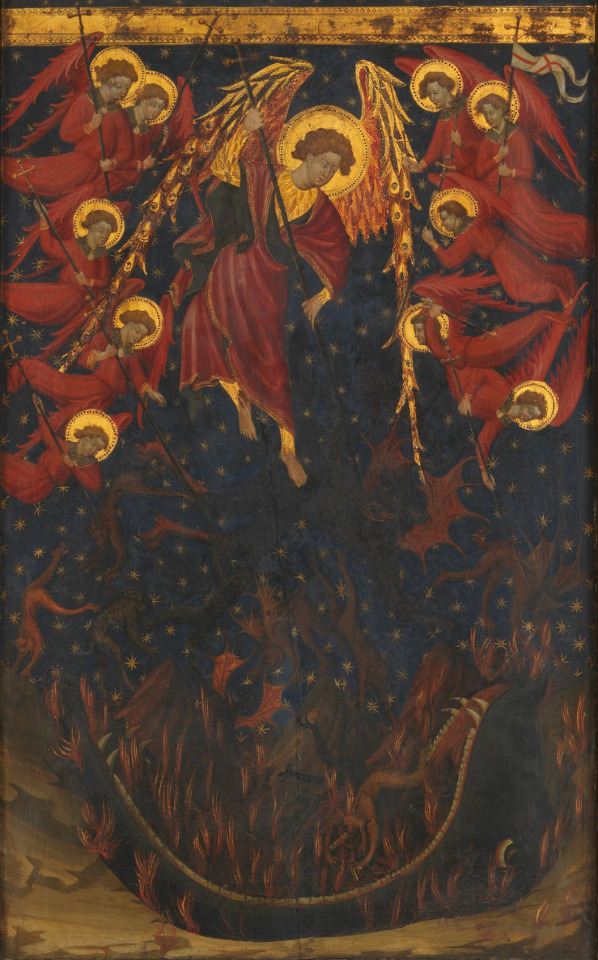
The Trinity Adored by All Saints, Spanish Painter (ca. 1400s)
#art#european art#christian art#early christianity#christentum#The Trinity Adored by All Saints#Tempera and gold on wood#gold leaf#fine art#classical art#europe#european#oil painting#fine arts#europa#mediterranean#southern europe#catholic#catholicism#angel#angels#hell#demons#western civilization#hispanic
110 notes
·
View notes
Text



The Battistero degli Ariani (Baptistery of the Arians). It was built around the end of the 5th century by King Theodoric the Great.
Ravenna, Italy
#ravenna#italy#italia#baptistery#original photography#photography#travel#photographers on tumblr#lensblr#architecture#historical architecture#5th century#theodoric the great#ostrogoths#early christianity#late antiquity#church#church architecture#wanderingjana
23 notes
·
View notes
Text
John the Baptist's Wilderness Vegetarian Diet Explained - Spiritual Awakening Radio Podcast

Not A Caveman Fixated on Bugs and Bees After All: John the Baptist's Wilderness Vegetarian Diet - Locust Beans Not Bugs - An Exploration of Early Christian Writings and Scholarly Texts Today on This Spiritual Awakening Radio Podcast.
Nevermind the old Sunday school notion of John the Baptist being some weird caveman dude dining on bugs! John may have a tarnished caveman reputation of eating locusts and honey out in the wild, but this is really a story about copyists mistranslating a Greek word as "locust" ('a-k-r-i-d-e-s') instead of "carob" ('e-g-k-r-i-d-e-s'). (Henry Ford: "Anyone who stops learning is old, whether at twenty or eighty. Anyone who keeps learning stays young." Albert Einstein: "Intellectual growth should commence at birth and cease only at death.")
Since my original research on this topic, a couple more early Christian apocryphal writings have come to light, have been made available in English. These add to the surprisingly large collection of vegetarian references in early Christian writings regarding the diet of John the Baptist. New Testament Apocrypha, Vol. III, by Tony Burke was published and some John the Baptist books are included. In one of the earlier volumes there was a John the Baptist text made available for the first time in English that has a vegetarian passage regarding John's diet in the wilderness. Included in the third volume are, The Birth of Holy John the Forerunner, and, The Decapitation of John the Forerunner, both containing plant-based passages about John's diet consisting of "locusts from the tree" (in the Middle east called "the Saint John's Tree", and "Carob Tree") and "wild honey", also "an abundance of bread and wild honey dripping from a rock". Clearly there was an understanding in early Christianity that this was referring to locust beans (carob pods), not insects. Carob pods do look a bit like locusts hanging from tree branches, hence the name. Locust beans can be ground up and used to make a kind of Middle eastern carob flour flat bread. There's a "cakes dipped in honey" reference in the Gospel of the Ebionites. The wild "honey" was not from bees but sticky desert fruit of some kind. So, as you'll hear being documented during this pod...cast, there are all these plant-based references to John's diet coming from many different sources, and scholars have noticed and discussed these: "Probably the most interesting of the changes from the familiar New Testament accounts of Jesus comes in the Gospel of the Ebionites description of John the Baptist, who, evidently, like his successor Jesus, maintained a strictly vegetarian cuisine." (Professor Bart Ehrman, Lost Christianities: The Battles for Scripture and the Faiths We Never Knew) "His [John the Baptist's] food was wild honey that tasted like manna, like a cake cooked in olive oil." (The Other Gospels, Accounts of Jesus from Outside the New Testament, by Bart Ehrman)
John the Baptist was a prophet with large number of followers in Israel and Transjordan regions. After his passing, several of his successors headed what became various rival Nasoraean (Nazorean) sects, one of those being Jesus and the Jesus movement. "Again Jesus said to his disciples: Truly I say to you, among all those born of women none has arisen greater than John the Baptizer." (Matthew 11:11, George Howard's translation of Shem-Tob's Hebrew Gospel of Matthew, described as "the oldest extant Hebrew version of the Gospel of Matthew")
John the Baptist's Wilderness Vegetarian Diet Explained - Spiritual Awakening Radio Podcast - Listen and/or Direct MP3 Download @:
https://traffic.libsyn.com/spiritualawakeningradio/John_the_Baptists_Wilderness_Vegetarian_Diet_Explained.mp3
@ the Podcast Website With Buttons That Go To All the Popular Podcast APPS - Wherever You Follow Podcasts:
https://SpiritualAwakeningRadio.libsyn.com/john-the-baptists-wilderness-vegetarian-diet-explained
@ Apple Podcasts:
https://podcasts.apple.com/us/podcast/john-the-baptists-wilderness-vegetarian-diet-explained/id1477577384?i=1000635517078
@ Spotify:
https://open.spotify.com/episode/0lMU46P0Tm9uugwN7IRgC5
@ Audible:
https://www.amazon.com/Spiritual-Awakening-Radio/dp/B08K561DZJ
@ Google Podcasts:
https://podcasts.google.com/search/spiritual%20awakening%20radio
& @ Wherever You Subscribe and Follow Podcasts - At Your Favorite Podcast APP Just Do a Search for "Spiritual Awakening Radio" - (Apple Podcasts, Spotify, Google Podcasts, Amazon, Audible, PodBean, Podcast APP, Overcast, Jio Saavan, iHeart Radio, Podcast Addict, CastBox, etc...):
https://linktr.ee/SpiritualAwakeningRadio
May the Blessings Be,
James Bean
Spiritual Awakening Radio Podcasts
Sant Mat Satsang Podcasts
Sant Mat Radhasoami
A Satsang Without Walls
https://www.SpiritualAwakeningRadio.com
#prayer of thanksgiving#go vegan#vegan thanksgiving#john the baptist#new testament apocrypha#vegan#veg#veganism#vegan christian#christian mysticism#christian mystics#vegetarian christians#early christianity#john the baptizer#gospel of matthew#gospel of the ebionites#gospel of the hebrews#hebrew gospel of matthew#jesus#vegan jesus#happy vegan thanksgiving#spiritual awakening radio podcasts
13 notes
·
View notes